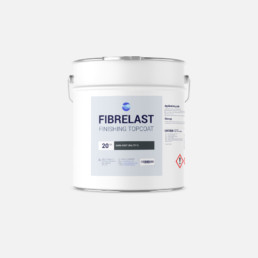Finishing topcoat guide
How to apply the GRP Roofing finishing topcoat system
Related content
Other questions and topics relating to the finishing topcoat
Mixing the catalyst
How long do I mix the catalyst for in the resin and topcoat?
Catalyst and Resin
Why do you sell catalyst separate from the resin and topcoat?
Custom colours
Can I get a custom Fibrelast finishing colour?
Roof colour change
Can I change the colour of my GRP roof?
Application
The Fibrelast finishing topcoat comes in a wide range of colours and along with making the roof aesthetically pleasing, increases the roofs strength and durability whilst also working as a barrier to prevent UV degradation.
Apply the finishing topcoat when the laminate is semi-cured, this means you can walk on the roof without any stickiness and the glass layer is impossible to move with your finger. If you find that you have run out of time for the day and you are loosing light then make sure that you cover and apply the finishing topcoat within 24 hours.
Using sanding paper or a sanding machine, gently sand the surface and corners of the laminate making sure to remove any unwieldy fibres. Next take a sharp utility knife and cut away any excess cured fibreglass matting that has extended beyond the trims, in the industry this is known as green trimming.
Open the can of Fibrelast finishing topcoat and give it a good stir before pouring any into a mixing bucket. The finishing topcoat will require the same amount of catalyst as the base resin, however if you are applying the finish at the end of the day with temperatures dropping you may need to add extra catalyst to the mix. Use an infrared thermometer to gauge the temperature of both roof surface and topcoat.
Mix the finishing topcoat in small batches of 3-5 litres and apply it to the roof using the chemical resistant topcoat rollers. Aim to achieve a thickness of around 1mm, if the finish is applied too thick then it may crack when it cures, too thin and it will not efficiently cure. Use a smaller roller or brush to coat the trims using a discard piece of trim to protect the fascia from any drips.





